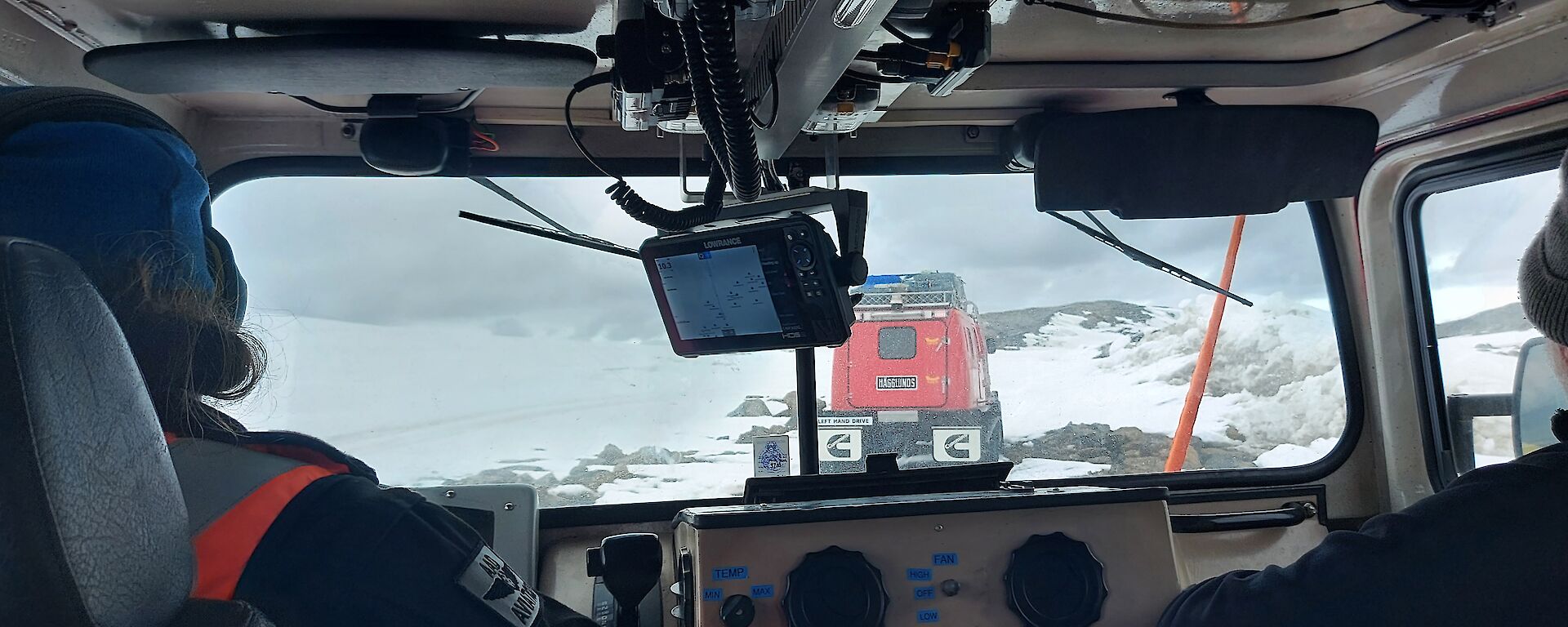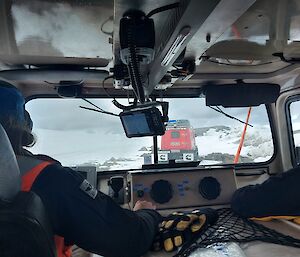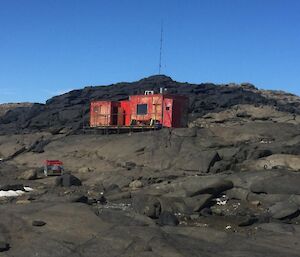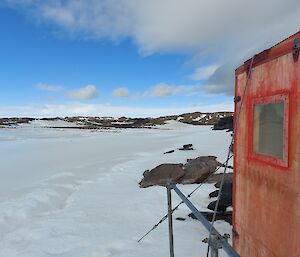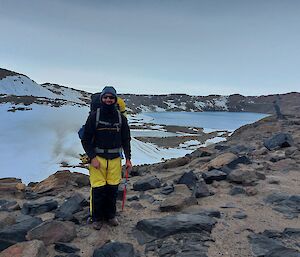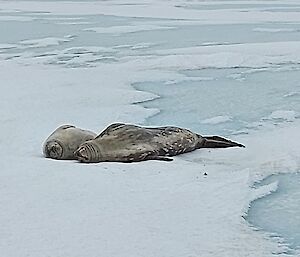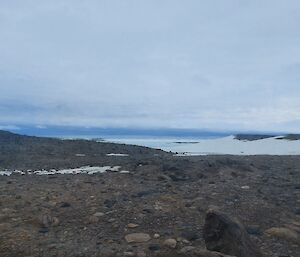After some on-station training we are all required to undertake survival training. Last week a group of six, including one FTO (Field Training Officer) took a Hägglunds ride for about an hour to the starting point for our survival training. Our first port of call was to visit a couple of melon huts (yes, they are the shape of melons) and while there, plot our navigation route to Brookes hut (under the watchful eye of our FTO Jason), where we would be staying for the night. Once planning was complete, we headed off on our hike through the hills towards Brookes hut. While crossing the sea ice at Weddell Arm we were lucky enough to see a mum and pup seal.
By mid-afternoon we arrived at the hut. From there we completed training in navigation, using ice axes and crampons, setting up emergency tents, using fuel shellite stoves to cook our dehydrated meals. After doing our evening radio schedule (also known as a Sked) we settled in for a long night in our bivvy bags (otherwise known as a chip packet because of the noise it makes). I managed only a couple of hours of sleep due to the hard rocks that I had set-up on and the sheets of ice that were falling from the roof of the bivvy bag, but surprisingly the bivvy bag was nice and warm. Jamie, who was the only person that made the decision to sleep in the snow, managed a great night’s sleep.
The next morning, we had a warm brew and completed some training on the GPS. After doing our morning radio schedule, we commenced our 15km hike back to Davis research station. Our route took us via Deep, Stinear and Dingle lakes. Deep Lake is 50 metres below sea level and is the only one of the lakes that doesn’t freeze due to the high content of salt.
After a solid five hours we arrived back at Davis and enjoyed a nice evening meal and a well earned sleep in a comfortable bed.
Skip

